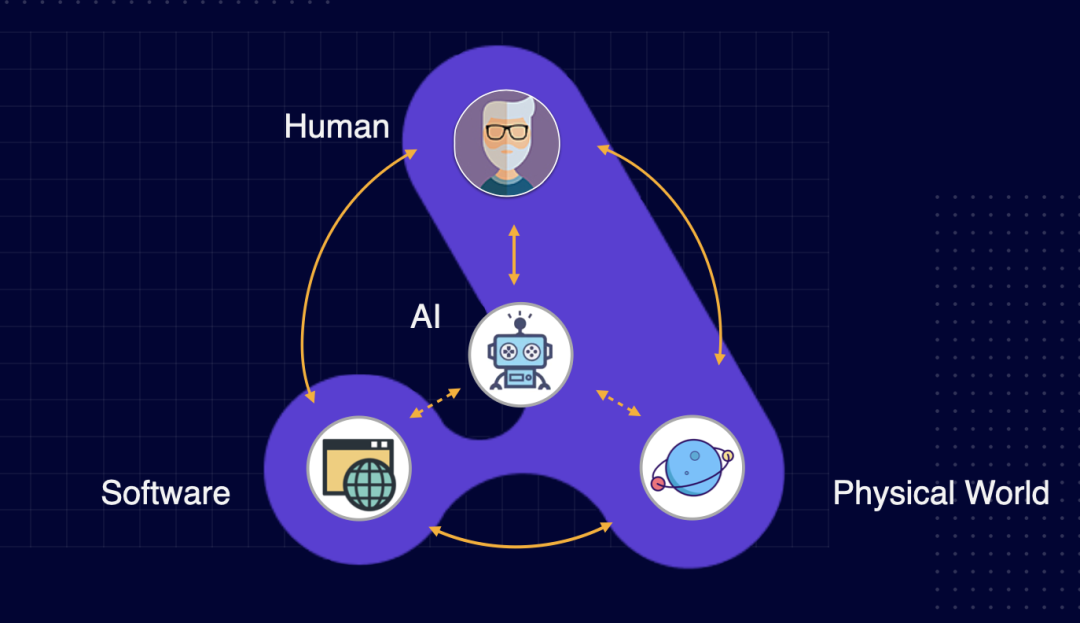Java 调用Restful API接口的几种方式
背景:在开发中常常会遇到调用别人提供的Restful API接口、获取写一个程序去测试Restful API接口的需求,java调用Restful API接口的方式不同于前端Ajax调用,能够实现的方式有很多,这里选用最常用的一种HttpClient。 HTTPSClient.java HttpClient可以远程调用比如请求一个URL,然后在response里获取到返回状态和返回信息,我...
·
背景:在开发中常常会遇到调用别人提供的Restful API接口、获取写一个程序去测试Restful API接口的需求,java调用Restful API接口的方式不同于前端Ajax调用,能够实现的方式有很多,这里选用最常用的一种HttpClient。
HTTPSClient.java
HttpClient可以远程调用比如请求一个URL,然后在response里获取到返回状态和返回信息,我们就是使用HttpClient进行接口调用,另一个需要注意的知识点是HTTPS,这个牵涉到证书或用户认证的问题。
package cn.itcast.ssm.rest;
import org.apache.http.config.Registry;
import org.apache.http.config.RegistryBuilder;
import org.apache.http.conn.socket.ConnectionSocketFactory;
import org.apache.http.conn.socket.PlainConnectionSocketFactory;
import org.apache.http.impl.client.CloseableHttpClient;
import org.apache.http.impl.client.HttpClientBuilder;
import org.apache.http.impl.client.HttpClients;
import org.apache.http.impl.conn.PoolingHttpClientConnectionManager;
public abstract class HTTPSClient extends HttpClientBuilder {
private CloseableHttpClient client;
protected ConnectionSocketFactory connectionSocketFactory;
/**
* 初始化HTTPSClient
*
* @return 返回当前实例
* @throws Exception
*/
public CloseableHttpClient init() throws Exception {
this.prepareCertificate();
this.regist();
return this.client;
}
/**
* 准备证书验证
*
* @throws Exception
*/
public abstract void prepareCertificate() throws Exception;
/**
* 注册协议和端口, 此方法也可以被子类重写
*/
protected void regist() {
// 设置协议http和https对应的处理socket链接工厂的对象
Registry<ConnectionSocketFactory> socketFactoryRegistry = RegistryBuilder.<ConnectionSocketFactory>create()
.register("http", PlainConnectionSocketFactory.INSTANCE)
.register("https", this.connectionSocketFactory)
.build();
PoolingHttpClientConnectionManager connManager = new PoolingHttpClientConnectionManager(socketFactoryRegistry);
HttpClients.custom().setConnectionManager(connManager);
// 创建自定义的httpclient对象
this.client = HttpClients.custom().setConnectionManager(connManager).build();
// CloseableHttpClient client = HttpClients.createDefault();
}
}
HTTPSTrustClient.java
继承HTTPSClient,返回一个需要认证的socket。
package cn.itcast.ssm.rest;
import java.security.cert.CertificateException;
import java.security.cert.X509Certificate;
import javax.net.ssl.SSLContext;
import javax.net.ssl.TrustManager;
import javax.net.ssl.X509TrustManager;
import org.apache.http.conn.ssl.SSLConnectionSocketFactory;
public class HTTPSTrustClient extends HTTPSClient {
public HTTPSTrustClient() {
}
@Override
public void prepareCertificate() throws Exception {
// 跳过证书验证
SSLContext ctx = SSLContext.getInstance("TLS");
X509TrustManager tm = new X509TrustManager() {
@Override
public void checkClientTrusted(X509Certificate[] chain, String authType) throws CertificateException {
}
@Override
public void checkServerTrusted(X509Certificate[] chain, String authType) throws CertificateException {
}
@Override
public X509Certificate[] getAcceptedIssuers() {
return null;
}
};
// 设置成已信任的证书
ctx.init(null, new TrustManager[] { tm }, null);
this.connectionSocketFactory = new SSLConnectionSocketFactory(ctx);
}
}
HTTPSClientUtil.java
创建工具类,用于设置参数,这里有两种参数方式,一种是Map格式的参数,一种是Json格式的参数
package cn.itcast.ssm.rest;
import java.util.ArrayList;
import java.util.List;
import java.util.Map;
import java.util.Set;
import org.apache.http.HttpEntity;
import org.apache.http.HttpResponse;
import org.apache.http.NameValuePair;
import org.apache.http.client.HttpClient;
import org.apache.http.client.entity.UrlEncodedFormEntity;
import org.apache.http.client.methods.HttpGet;
import org.apache.http.client.methods.HttpPost;
import org.apache.http.client.methods.HttpRequestBase;
import org.apache.http.entity.StringEntity;
import org.apache.http.message.BasicNameValuePair;
import org.apache.http.protocol.HTTP;
import org.apache.http.util.EntityUtils;
public class HTTPSClientUtil {
private static final String DEFAULT_CHARSET = "UTF-8";
//Map类型的参数
public static String doPost(HttpClient httpClient, String url, Map<String, String> paramHeader,
Map<String, String> paramBody) throws Exception {
return doPost(httpClient, url, paramHeader, paramBody, DEFAULT_CHARSET);
}
public static String doPost(HttpClient httpClient, String url, Map<String, String> paramHeader,
Map<String, String> paramBody, String charset) throws Exception {
String result = null;
HttpPost httpPost = new HttpPost(url);
setHeader(httpPost, paramHeader);
setBody(httpPost, paramBody, charset);
HttpResponse response = httpClient.execute(httpPost);
if (response != null) {
HttpEntity resEntity = response.getEntity();
if (resEntity != null) {
result = EntityUtils.toString(resEntity, charset);
}
}
return result;
}
//json类型的参数
public static String doPostJson(HttpClient httpClient, String url,String strJson) throws Exception {
return doPostJson(httpClient, url, strJson, DEFAULT_CHARSET);
}
public static String doPostJson(HttpClient httpClient, String url, String strJson, String charset) throws Exception {
String result = null;
HttpPost httpPost = new HttpPost(url);
//httpPost.setHeader("Content-Type", "text/xml;charset=UTF-8");
httpPost.addHeader(HTTP.CONTENT_TYPE, "application/json");
StringEntity entity = new StringEntity(strJson);
httpPost.setEntity(entity);
HttpResponse response = httpClient.execute(httpPost);
if (response != null) {
HttpEntity resEntity = response.getEntity();
if (resEntity != null) {
result = EntityUtils.toString(resEntity, charset);
}
}
return result;
}
public static String doGet(HttpClient httpClient, String url, Map<String, String> paramHeader,
Map<String, String> paramBody) throws Exception {
return doGet(httpClient, url, paramHeader, paramBody, DEFAULT_CHARSET);
}
public static String doGet(HttpClient httpClient, String url, Map<String, String> paramHeader,
Map<String, String> paramBody, String charset) throws Exception {
String result = null;
HttpGet httpGet = new HttpGet(url);
setHeader(httpGet, paramHeader);
HttpResponse response = httpClient.execute(httpGet);
if (response != null) {
HttpEntity resEntity = response.getEntity();
if (resEntity != null) {
result = EntityUtils.toString(resEntity, charset);
}
}
return result;
}
private static void setHeader(HttpRequestBase request, Map<String, String> paramHeader) {
// 设置Header
if (paramHeader != null) {
Set<String> keySet = paramHeader.keySet();
for (String key : keySet) {
request.addHeader(key, paramHeader.get(key));
}
}
}
private static void setBody(HttpPost httpPost, Map<String, String> paramBody, String charset) throws Exception {
// 设置参数
if (paramBody != null) {
List<NameValuePair> list = new ArrayList<NameValuePair>();
Set<String> keySet = paramBody.keySet();
for (String key : keySet) {
list.add(new BasicNameValuePair(key, paramBody.get(key)));
}
if (list.size() > 0) {
UrlEncodedFormEntity entity = new UrlEncodedFormEntity(list, charset);
httpPost.setEntity(entity);
}
}
}
}
HTTPSClientTest.java
进行测试
package cn.itcast.ssm.rest;
import java.util.HashMap;
import java.util.Map;
import org.apache.http.client.HttpClient;
import com.google.gson.Gson;
import cn.itcast.ssm.po.Gree;
/**
* https://blog.csdn.net/zpf336/article/details/73480810/
* @author 738232
*
*/
public class HTTPSClientTest {
public static void main(String[] args) throws Exception {
HttpClient httpClient = null;
httpClient = new HTTPSTrustClient().init();
//httpClient = new HTTPSCertifiedClient().init();
String url = "https://...";
//String url = "https://1.2.6.2:8011/xxx/api/getHealth";
String AppID = "";
String Secret = "";
Gree gree = new Gree();
gree.setAppID(AppID);
gree.setSecret(Secret);
Gson gson=new Gson(); //对象转Json
String strJson = gson.toJson(gree);
String result = HTTPSClientUtil.doPostJson(httpClient, url, strJson);
//String result = HTTPSClientUtil.doGet(httpsClient, url, null, null);
System.out.println(result);
}
}
博客文章同步在微信公众号:Web小项目
覆盖百万优质粉丝的web项目分享平台;
优质Web项目分享,技术解决方案汇总,开发资料分享,面试资料汇总,互联网公司面试真题,技术博客等专题内容;
扫描下方二维码关注我们,领取项目资料:

更多推荐
 已为社区贡献1条内容
已为社区贡献1条内容










所有评论(0)